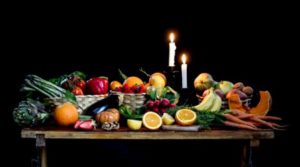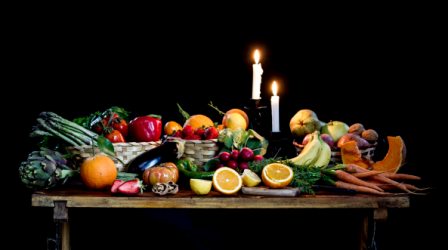I love to eat and I eat a lot of food every day. When I am out and about I also like to watch what other people are eating. Now don’t get me wrong, I am not the food police or a stalker, but I often wonder if these folks think about the effect these foods are having on their weight.
I like to exercise and sometimes correlate how much exercise it will take to work off some of these foods. For instance, a 150 pound person would need to bicycle (at 9 miles per hour) for one hour and 35 minutes to work off a Five Guys regular fries (9 oz., 620 calories). One Panera chocolate chipper cookie (3 oz., 440 cal.) would take one hour and 30 minutes of brisk walking at three miles per hour. A small movie theater popcorn (6 cups, 410 cal.) would put you in the gym doing low-impact aerobics for one hour and 15 minutes. If I chose to eat these foods often, I would need to quit my job and exercise instead in order to keep my body weight under control.

What all these foods, and much of what the average American is eating, have in common is they have high calorie density. These foods are missing the one ingredient that can help you eat more and lose weight – water. Water adds weight and volume, but no calories. Studies show, day after day, people eat the same weight (or volume) of food. You can use this to your advantage by choosing foods with fewer calories per pound (or per bite), making you feel just as full with fewer calories. Think raisins compared to grapes. What do you think would make you feel more full, 10 grapes or 10 raisins?
Dr. Barbara Rolls from Penn State has written extensively in articles and books on a very effective strategy to lose and maintain weight loss she calls Volumetrics. I personally use these concepts every day. The principle is simple — eat more foods that contain lots of water, lowering their calorie density. At the same time, eat less of the foods that are higher in calorie density. These are foods high in fat, sugar and refined grains such as white flour in pasta, breads, etc.
The superstar foods that have low calorie density are fruits, vegetables and soups (broth-based, not cream-based). Other lower calorie dense foods include whole grains and seafood. For instance, a pizza could have less cheese and add some vegetables. Having a soup, salad or even a piece of fruit for an appetizer can help fill you up so you eat less at the next course. You will end up eating fewer calories at that meal. This is a real win-win because you are getting to eat more food, getting more nutritionally rich foods, you’re less hungry and you’re managing your weight.
The thing I like best about this approach is its flexibility. You don’t need to give up anything, you just reduce the high density parts of a dish and add in some low density foods. Here are some examples. In order to make soups creamy and more filling, puree steamed cauliflower and add this instead of cream. For mac and cheese, replace some mac and cheese with some veggies. You can match the veggies to the dish. Mac and cheese go very well with summer squash, cauliflower, onion or parsnips. Add chunks of or purees of broccoli or spinach to tomato sauce —this allows you to reduce the amount of pasta and still eat plenty of quantity. Instead of using Hamburger Helper to bulk up a dish, add healthy, low-calorie dense vegetables instead of refined pasta, white rice and starchy foods. Now you can say goodbye to that creepy little hand thing on the Hamburger Helper package!
Quinoa Tabouli
This is a healthy, delicious and refreshing dish. Have it as a side or a main dish. This version of tabouli is packed with protein, herbs and water-filled veggies, making it much healthier than tabouli made with refined white wheat couscous.
1 cup quinoa cooked, made as directed on package (use chicken or vegetable broth as liquid), see note below.
3/4 to 1 cup chopped flat leaf parsley, lightly packed
1/4 to 1/3 cup chopped scallions
1 garlic clove, minced or put through press
1/4 cup lemon juice, or more to taste
3 Tbs olive oil
1 to 2 cups of any vegetables you like, cooked or raw. Examples are zucchini, cauliflower, broccoli, green beans, etc.
1/4 tsp salt (or to taste)
1/8 tsp pepper (or to taste)
Make quinoa as directed on package and cool. Combine all ingredients. Serve chilled or at room temperature.
Note: quinoa can get very soft and mushy quickly. I like to undercook so it maintains a firm texture. I cook for 10 minutes, once the water comes back to a boil and then turn the heat off and let it sit absorbing the liquid for another five minutes.
This article was contributed by Dr. Stuart Offer.
 Related Articles & Free Subscription
Related Articles & Free Subscription
The Dangers of Trans Fat in a Diet







Comment here